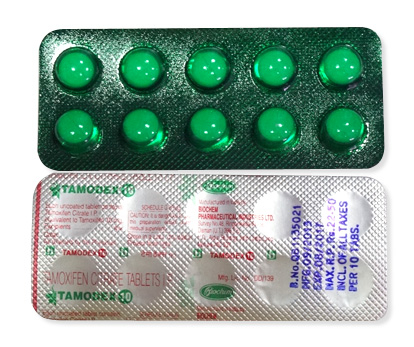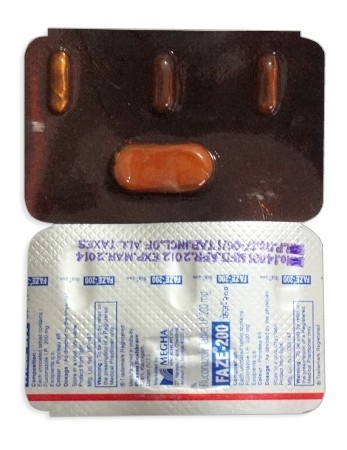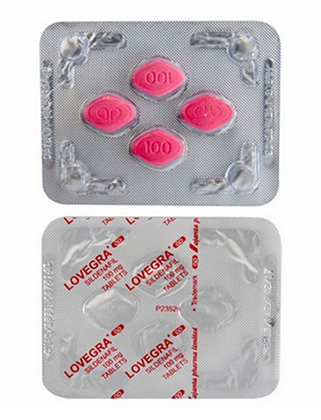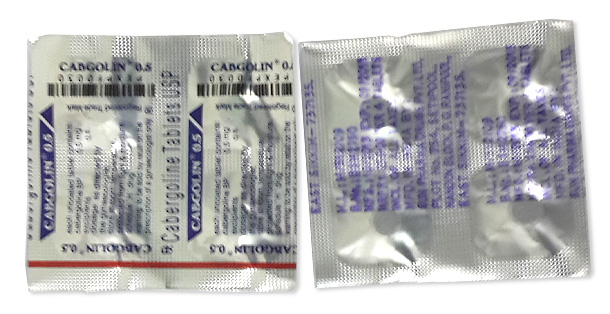
Ponstel
- In our pharmacy, you can purchase Ponstel with a prescription, as it is prescription-only in most jurisdictions, including the Canada and EU.
- Ponstel is used for the treatment of acute mild-to-moderate pain and primary dysmenorrhea. It acts as a non-steroidal anti-inflammatory drug (NSAID) by inhibiting the production of prostaglandins, which are responsible for pain and inflammation.
- The usual dosage for adults is 500 mg initially, followed by 250 mg every 6 hours as needed, up to a maximum of 1 week for acute pain.
- The form of administration is capsules (250 mg) and tablets (250 mg, 500 mg).
- The effect of the medication typically begins within 30 minutes to 1 hour.
- The duration of action is approximately 6-8 hours.
- It is advisable to avoid alcohol while taking Ponstel, as it may increase the risk of gastrointestinal side effects.
- The most common side effects include stomach pain, nausea, and headache.
- Would you like to try Ponstel without a prescription?
Basic Ponstel Information
• INN (International Nonproprietary Name)
• Brand names available in Canada
• ATC Code
• Forms & dosages (e.g., tablets, injections, creams)
• Manufacturers in Canada
• Registration status in Canada
• OTC / Rx classification
Understanding Ponstel and Mefenamic Acid
Mefenamic acid serves as the generic name for Ponstel, a medication classified as a non-steroidal anti-inflammatory drug (NSAID). In Canada, Ponstel can also be found as various generic formulations, which are available globally. With an ATC classification code of M01AG01, this medication is primarily enlisted in the fenamates group, designed to alleviate inflammation and pain. Patients can access Ponstel in multiple dosage forms. It comes in capsules of 250 mg, tablets in 250 mg and 500 mg, and oral suspensions specially tailored for pediatric use, containing concentrations of 50 mg/5 ml and 100 mg/5 ml. The manufacturer landscape reveals that Pfizer was behind the Ponstel brand, however it has been discontinued in the United States. Various manufacturers from Asia, including BlueCross, continue to produce mefenamic acid with registration overseen by Health Canada, ensuring compliance with local drug standards. It is essential to note that Ponstel is predominantly a prescription-only medication in most jurisdictions. There are limited OTC options available in selected regions, reflecting the importance of healthcare professional guidance for safe usage.
Classification and Registration Status of Ponstel
Mefenamic acid stands out due to its rigorous registration process in Canada and abroad. As a prescription medication, it requires formal medical oversight for use, ensuring it is prescribed based on a thorough assessment of a patient’s medical history and needs. The classification as an NSAID indicates its primary function in treating pain and reducing inflammation. When looking for its official status or additional details, healthcare providers or patients can refer to the Health Canada drug database for the most current registration information. This assures users have access to safe and effective medication tailored for their condition, underscoring the commitment to quality in pharmaceutical care.
Dosage & Administration of Ponstel
When considering how to take Ponstel, knowing the dosage guidelines is crucial for effectiveness and safety. Here's how it breaks down:
Typical Dosage by Condition
For individuals facing acute pain, the recommended approach involves starting with 500 mg, followed by 250 mg every six hours as needed. This regimen can be continued for a maximum of up to one week.
If experiencing dysmenorrhea, the dosing is quite similar, beginning with 500 mg followed by 250 mg every six hours—typically for a duration of just two to three days.
Adjustments for Age or Comorbidities
Age and health conditions can necessitate dosage adjustments. For elderly patients, careful consideration of medical history is essential due to the increased risk of adverse effects. Renal or hepatic impairment may also require either a reduced dosage or close monitoring during treatment.
Treatment Duration, Storage, Transport
Ensure Ponstel is stored properly to maintain its efficacy. It should be kept in its original container at a temperature of 20-25°C and protected from moisture. Following these guidelines helps prolong the medication's effectiveness and safety.
Safety & Warnings for Ponstel
Safety is paramount when using any medication, and Ponstel is no exception. Here's what you need to know regarding its safe use:
Contraindications
There are specific conditions where Ponstel should not be used:
- Absolute contraindications include history of NSAID allergies, active peptic ulcers, and severe renal or hepatic impairment.
- For elderly patients or those with cardiac or gastrointestinal histories, caution is advised.
Side Effects
Common side effects may include stomach discomfort, nausea, and mild skin rash. While these may be uncomfortable, they are not usually serious. However, rare but severe reactions like gastrointestinal bleeding, renal failure, and severe allergic reactions can occur and should not be ignored.
Special Precautions
Pregnant individuals should be monitored closely when taking Ponstel, and liver and kidney function tests are recommended for susceptible populations. Although Ponstel doesn't come with a black box warning, those considering long-term use should consult their healthcare provider to weigh risks and benefits.
Patient Experience with Ponstel
User reviews play a significant role in understanding how Ponstel works in real life. Feedback gathered from various platforms reveals a range of experiences.
User Reviews
On sites like WebMD and Reddit, individuals often cite Ponstel's effectiveness for pain relief, mentioning how it significantly reduces discomfort during menstrual periods or following surgeries.
Feedback on Specific Forums
Many discussions on platforms such as Facebook reveal both success stories and concerns regarding side effects. Users share their journeys, voicing relief at finding relief but sometimes grappling with stomach pain or gastrointestinal distress.
Subjective Insights
Medication adherence is another common theme. Many users emphasize the importance of following dosing instructions carefully to avoid missing doses for optimal effectiveness.
Alternatives & Comparison to Ponstel
Exploring alternatives to Ponstel can provide additional options for pain relief. Several well-known alternatives exist in Canada.
Common Alternatives in Canada
Among the most commonly recommended alternatives are:
- Ibuprofen
- Naproxen
- Diclofenac
Comparison of Alternatives
A comparison might show that while Ponstel is effective, medications like ibuprofen are often more accessible and sometimes less costly. Many patients find these alternatives easier to obtain at local pharmacies.
Doctor Preferences
Insights from healthcare professionals indicate that many doctors often prefer prescribing ibuprofen or naproxen for their familiarity and ease of use. It’s worth discussing with a physician if Ponstel isn’t providing the desired relief or if there are safety concerns.
Market Overview (Canada)
Trying to find Ponstel in Canada? You're likely going to check out popular pharmacy chains like Shoppers Drug Mart and Walmart. Local pharmacies often stock Ponstel as well, so it’s good to inquire there too. Having easy access to medication can really make a difference when you're dealing with pain.
When it comes to pricing, you'd typically see Ponstel averaging around 10 to 30 CAD for a standard pack, but the exact price can vary depending on the dosage and where you buy it. For instance, the 250 mg capsules might run a bit cheaper than the 500 mg tablets. Always a good idea to shop around for the best deal!
Now let's talk packaging. Ponstel usually comes in blister packs or bottles. Blister packs can help keep the medication safe and secure, reducing the risk of contamination. This packaging is especially handy for those who might forget their doses; you can clearly see how many you've taken. Accessibility plays a big role here, as the right packaging can encourage proper use.
Demand patterns for Ponstel have fluctuated over the years. Historically, there tends to be a spike in demand during colder months when people often experience more pain-related issues. Interestingly, the COVID-19 pandemic also saw a shift in buying patterns, as many turned to over-the-counter medications in the face of an uncertain health landscape.
Research & Trends
Looking into recent studies from 2022 to 2025 regarding Ponstel reveals a mix of support and critique. Meta-analyses have continued to affirm the effectiveness of mefenamic acid for conditions like dysmenorrhea and acute pain. There are even clinical trials that challenge older assumptions, offering a fresh perspective on its use.
In the realm of experimental uses, researchers are exploring potential new applications for mefenamic acid beyond pain relief. Initial findings look promising, though further investigation is essential to validate these claims.
As for patent statuses and the generics market, Ponstel is currently available in its generic form as mefenamic acid, which is crucial for Canadian consumers looking for cost-effective options. The generics market is thriving both here and abroad, ensuring that those in need have access to this medication.
Guidelines for Proper Use
Proper use of Ponstel is essential for safety and effectiveness. Taking it as prescribed, generally with food or a full glass of water can help reduce stomach upset. It’s vital to monitor yourself and follow the healthcare provider's recommendations closely.
There are a few things to watch out for. Avoid alcohol, as it may heighten side effects. Combining Ponstel with other NSAIDs can also increase the risk of gastrointestinal issues. Remember that this medication should be stored in a cool, dry place, away from sunlight and moisture – just as you would handle any important meds.
Common mistakes to avoid include:
- Skipping doses or not taking them at regular intervals.
- Overlooking important medical history that could affect usage.
Always keep in mind to read the patient information leaflet. It provides vital insights into what to expect and precautions you might need to consider. Consulting with a healthcare professional can clear up any doubts or concerns.








